Success is not final, failure is not fatal: it is the courage to continue that counts.
Winston Churchill.
 There now seems to be a general consensus within the community and especially within the agricultural community, that Australia’s reliance on China has lulled us all into a false sense of security. We have been complacent. We have been happy to accept the contribution China has made to our standard of living by making available to us a range of ‘goods’ at prices that have been more than acceptable.
There now seems to be a general consensus within the community and especially within the agricultural community, that Australia’s reliance on China has lulled us all into a false sense of security. We have been complacent. We have been happy to accept the contribution China has made to our standard of living by making available to us a range of ‘goods’ at prices that have been more than acceptable.
We have been more than happy to receive their tourists in their tens of thousands and a similar number of students without whom some of our universities, especially the regional ones, cannot manage. There could well be cold economic winds this winter on some campuses.
China has infiltrated our lives to the extent that there is an argument that we cannot now manage without them.
 But manage without them we must; we must change. China’s aggression towards Australia is a sober reminder that they are a communist totalitarian regime intent upon the control and subjugation of others including Australia.
But manage without them we must; we must change. China’s aggression towards Australia is a sober reminder that they are a communist totalitarian regime intent upon the control and subjugation of others including Australia.
China’s recent announcements regarding the future of Hong Kong, the deterioration of relations with Taiwan and its future coupled with its aggressive posturing in the South China Sea are all pointing to a not so cold war.
Let us remind ourselves what our founding fathers achieved with far less than we have these days. Then let us plan for the future of our children and our grandchildren and all after them — just like the Chinese are doing right now for their future.
I cannot write with any authority on the development of the eastern states of Australia, South Australia or the Northern Territory, except to say that it it speaks for itself, we live in a wonderful country, but there are new headwinds to be faced. We have to become more self reliant and less complacent.
Unlike the United States where there are cities and industry right across that country and where the population has grown by a remarkable 45 million in the last 20 years to now stand at 328 million the population of Australia is just 30 million and has grown by 10 million in the last 20 years, and Australia’s population is largely confined to a narrow strip around the coast of this vast continent.
‘The Story of a Hundred Years – 1829 to 1929’.
These are just a few pickings out of one of my favourite books, ‘The Story of a Hundred Years – 1829 to 1929’.
It is the story of the first hundred years of what is now Western Australia. Edited by Sir Hal Colebatch and printed in 1929 by the Government Printer. There are 476 pages in this valuable book that records the achievements of the men and women of Western Australia in the first hundred years of this state.
What impresses me about the book is the story, the story that can’t help telling about the enterprise of the people. Right from the beginning they were planning for the future, they had a vision, they knew what kind of a country they wanted to build. I often ask myself do we know what kind of an Australia we want for our future generations? Do we have a vision or are we just too self centered?
The pioneers recognised that Western Australia was, in effect, another country, thousands of miles from the rest of Australia. The only route to the rest of Australia and to the rest of the world was by sea and by wooden sailing ships.
Their strategy right from the start was to be self-sufficient, arguably just as we should be today. What our forefathers built in the way of self sufficiency we have largely dismantled in the name of what we think is progress. We must now look towards self sufficiency again as we realise how dependent we have become on China and others for vital products and services.
By 1870, just over forty years after the first settlers landed in what is now Perth, there were two tanneries, a rope factory, two coach builders, twenty four flour mills and three breweries and a population of just 25,084. Eight thousand per brewery, they got something right.
When the colony was granted ‘Responsible Government’ in 1890, they had added ten aerated water factories, three boot factories, one biscuit factory, four fruit preserving works, three furniture factories, three confectionery factories, thirteen printing works, all mostly in the city, and there was, believe it or not, an essential oil factory in York and the population had increased to 46,290.
Between 1890 and 1900 the population grew from 46,290 to 179,708 and by 1914 it reached 322,089 and by 1928, 405,873.
In 1928, 1,398 factories employed 21,307 people and the gross value of production was $16,000,000 in today’s dollar that is $1.287 billion.
The Place of Steam Railways in Western Australia’s Development.
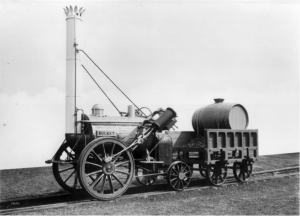 In 1829 Robert Stevenson was granted the first contract to carry passengers by steam train between Liverpool and Manchester in England, a distance of some thirty miles.
In 1829 Robert Stevenson was granted the first contract to carry passengers by steam train between Liverpool and Manchester in England, a distance of some thirty miles.
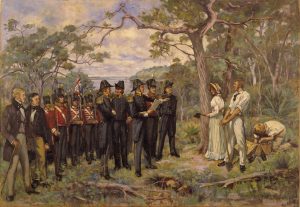
In the same year Captain James Stirling on behalf of Her Majesty Queen Victoria, laid claim to the Swan River Colony which a in 1901 became the State of Western Australia.
The Industrial Revolution is part of British history and the history of the world. Men like James Watt in 1755, led the world when they harnessed steam that provided the power for the winches that sent men deep into the earth to mine the coal that was needed to make the steam to drive the engines that powered the factories and eventually the trains and the ships. Before rail Britain built a complex network of canals which transported goods the length and breath of the country from north to south and across the Pennines from east to west.
The biggest ships of steel in the world were built in British shipyards. The first steam driven ship travelled from England to Australia in 1852 just 23 years after Stirling landed in Western Australia. From Stevenson’s Rocket to an ocean going steam ship in such a short time.
In the first hundred years the people of Western Australia knew all about the importance of steam. They built, with pick and shovel and horse and bullock wagons and then with steam itself, 4906 miles (6132 kilometres) of railway line.
first hundred years the people of Western Australia knew all about the importance of steam. They built, with pick and shovel and horse and bullock wagons and then with steam itself, 4906 miles (6132 kilometres) of railway line.
A line of communication which connected virtually every rural town and settlement, every grain grower and sheep keeper with the metropolitan markets and ports in Western Australia. And of course the telegraph followed the rail line wherever it could.
The WA Government owned 4094 miles of that complex, the Commonwealth Government 454 miles and 358 miles was owned by private companies.
In 1829 the Colony exported 309,640 pounds of wool. In 1927/8 the State of Western Australia exported 61,244,631 pounds pound or 273,413 tons of merino fleece with a value of £5 million. Five million million pounds today would be worth $402,320,660.
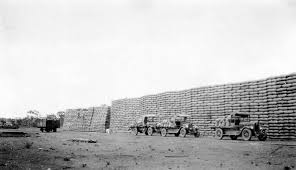
In 1900 Western Australia exported less than one ton of wheat, 1074 bushels. In 1928/29 the state exported an amazing 33,827,601 bushels of wheat or 2.9 million tons with an export value of £7 million, harvested off 3,343,197 acres. That yield is equivalent to 10.1 bushels per acre.
In 1929. oat production reached some 118,000 tons. All consumed within the state. A good amount being fed to horses as you will see.
Sufficient fruit was being grown to feed the population of about half a million with some left over for export, not big numbers, but how fruit exports grew over the years from a modest export figure of £191,915 in 1928.
In 1928 WA also exported timber worth £1,265,321. Flour exports worth £1,008,168. Peals £20,064 and pearl shell worth £166,065
Agriculture and gold mining were the mainstays of the Western Australia economy in 1928. The state boasted a herd of 850,000 cattle and some 9 million sheep, (3 million less than 2020) together with 20,000 pigs and 168,000 horses (that’s where the oats went?)
Virtually all of the agricultural produce and the timber produced in Western Australia at some time travelled by rail from point of production to either the Perth market or to a port for export.

By 1928 the rail reached every settlement and town within Western Australia. It is said that the smallest parcel or the biggest piece of machinery could be transported from Perth to anywhere in the state on the rail network and would reach its destination within 24 to 36 hours. It was also claimed that all wheat growers were within 30 miles of a rail head.
People, grain and livestock moved almost seamlessly throughout the state. As late as the 1960s most of the livestock and all of the fertilizer and wool was still transported by rail to and from Perth and Midland. As late as 1970 there was a passenger service from the wheatbelt and the south west and Great Southern to Perth.
Between settlement and 1928 Western Australia spent £24 million on railways, tramways and what they called an Electric Power Station. A similar amount had been spent on the development of agriculture. That is about $4 billion today.
Revenue.
The Revenue of WA in just one hundred years grew from £4,273 in 1829 to £9,807,949 by 1928 or in today’s dollar $789,188,104.37, and all of that with a population of less than 500,000.
The total value of the exports of gold and other minerals excluding coal, between 1900 and 1928 was £132,1597,20 or 32% of all exports. In 1900 they contributed 80% of all exports and by 1928 that contribution had declined to just 5% of all exports.
In 1928 WA exported timber worth £1,265,321. Flour worth £1,008,168, pearls to the value of £20,064 and pearl shell worth £166,065
Some 3.7 million acres of land was under crop, and the area unselected amounted to 348 million acres.
Total exports from this State from 1828 to 1928 was £303,402,356 which in today’s dollar is an amazing $24,332,543,132.98. That’s $24.33 billion.
How did the founding fathers and mothers (!) finance it all?
Banking started in Western Australia in 1837. A Prospectus was issued for the Bank of Western Australia in January of that year. The nominal capital was £10,000 and the subscribed capital was £2,500.
By 1928 the WA public debt of WA $68,340,000 or £168 7s 6d for every person and the population was less than 500,000, in today’s dollar that is just over $13,000 per person. In 2017 the State debt in Western Australia was just over $35 billion and with a population of 2.6 million, that means there is a (state) debt per person of $13,461 in 2017.
What kind of courage did it take for the founding fathers to take take on that kind debt? The answer must be in their belief in themselves and their knowledge of what could be achieved. It was a new country and they had a dream. A dream which they realised.
The progress of Western Australia after 1929 has been remarkable. What can the current and future governments of Western Australia achieve over the next hundred years? What awaits Western Australia between 2020 and 2120?
This wasn’t the way I was expecting to end this article, but then the unexpected happened. For those who read my first article in April on ‘Is China friend or?’ will remember that when discussing the need for some major new developments in Australia to get this nation away from the hold China currently has on us, I wrote about self sufficiency. What a nonsense it seemed to me to be exporting the best steel making coal and some of the best iron ore in the world, and then importing steel from places like China. The obvious question was ‘why can’t we make steel in this country and export it?’
Then this happened.
Project Iron Boomerang.
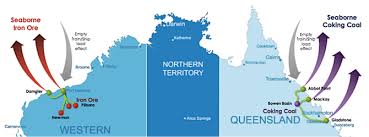 I came across an article last month about plans the late Lang Hancock (Gina’s father) and the late Joh Bjelke Peterson, the then Premier of Queensland, had in the seventies. They researched and claimed they had the money to build a rail across Australia from the Pilbara to the coal fields in Queensland and to build steel works at both ends and export steel to the world. We all know it didn’t happen. Apparently there was some movement again during Peter Beattie’s (~2007) time as premier and again in 2012 when it was either Blair or Newman.
I came across an article last month about plans the late Lang Hancock (Gina’s father) and the late Joh Bjelke Peterson, the then Premier of Queensland, had in the seventies. They researched and claimed they had the money to build a rail across Australia from the Pilbara to the coal fields in Queensland and to build steel works at both ends and export steel to the world. We all know it didn’t happen. Apparently there was some movement again during Peter Beattie’s (~2007) time as premier and again in 2012 when it was either Blair or Newman.

The good news, just when Australia is coming to terms with China and all that entails Project Iron Boomerang (PIB) is on again. The dream of Hancock and Peterson is about to be realised.’Cometh the hour cometh the man’.
Shane Condon is the boss of PIB. I gather he has been working on this project for many years. As many of us know who have been involved in big projects and in raising funds, it is all about timing. What better time could there be for a better than world class new project?
The all up cost is a staggering $55 billion. That’s a lot even in an era when billions are being thrown around. The cost is not what it is all about, it’s all about what it well mean to Australia, the people who work for PIB and for its shareholders. Exporting the best steel in the world to the world.
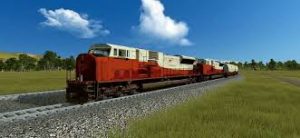 The plan is for there to be 6000 rail construction jobs, half in the Northern Territory. There will be 1500 permanent jobs. Sixteen billion dollars will be spent on rail and rolling stock and $35 billion on steel mills. What will it mean to the country in tax? All in the next article but it is substantial. It is projects like this that we need to pay off the debt from the pandemic, we cannot let it take thirty years.
The plan is for there to be 6000 rail construction jobs, half in the Northern Territory. There will be 1500 permanent jobs. Sixteen billion dollars will be spent on rail and rolling stock and $35 billion on steel mills. What will it mean to the country in tax? All in the next article but it is substantial. It is projects like this that we need to pay off the debt from the pandemic, we cannot let it take thirty years.
It is time to reflect on where we all want Australia to go, what pathway do we want it to take? Is now the time for big new projects that will help us, once again, stand on our own two feet?
There is a lot of talk about the need to build new dams, I don’t think we have built a new dam in WA in the last fifty years and there is so much water that goes to waste because we can’t be bothered harvesting it, it’s easier to pump it out of the aquifers, why is that? Are we more concerned about disturbing the wild life than preserving all life?
We are a nation that now relies on road transport for almost everything and certainly our roads in Western Australia with the exception of the metro area and the millionaire’s run to the south-west are a disgrace.
The rail system, for what it is, is there for the farmers and their grain but many don’t use it because it is too expensive, so they use road trains to pound the roads to bits and everyone pays for the privilege. We have to get this right sometime soon.
I will bring you details of Project Iron Boomerang in the next edition. Let us all get behind this exiting project because it is just the start we need for a new future for Australia.

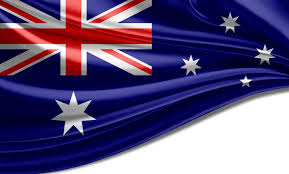
Believe me, you have to write more often. We need more articles like this one
Thank you. We have to strive for the future we want and not leave it to others to achieve.